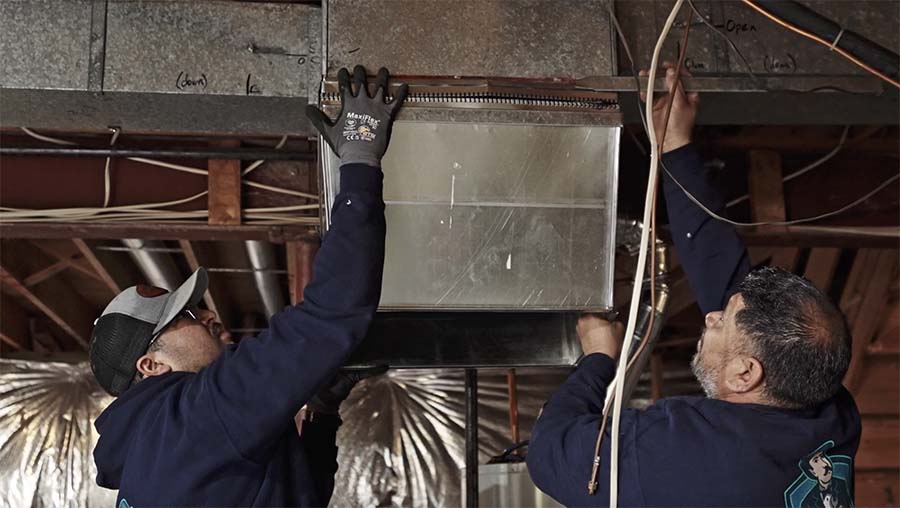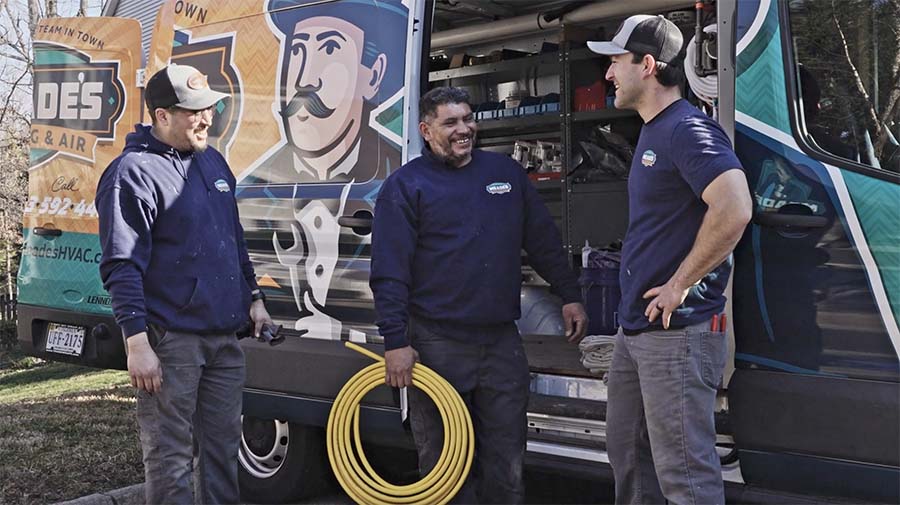The youngest baby boomers are now in their late 50s, and many are starting to eye retirement. This is hitting the HVACR industry particularly hard, as these older technicians have a vast amount of knowledge, which they will take with them when they retire. In addition, there are simply not enough younger workers interested in pursuing a career in HVACR to take their place.
The labor shortage has been an ongoing problem in the HVACR industry for decades, but with the impending wave of retirements, it will likely get worse in the coming years. This may lead some contractors to look for ways to retain their older technicians by either retraining them for less physical jobs or by offering phased retirement. The latter option can be particularly attractive, as companies can keep their experienced technicians part time, and older employees can still earn a paycheck while imparting their knowledge to younger workers.
Ongoing Problem
While the labor shortage has been a problem for years, the pandemic definitely made it worse. That can be seen in the labor-force participation rate (PDF), which was 63.3% pre-pandemic and as of March 2022, was only 62.4%. While the entire labor force is smaller than it used to be, the issue is even more severe in construction, said Anirban Basu, chief economist of Associated Builders and Contractors (ABC) at Construction Executive’s 2022 Q1 Construction Economic Update and Forecast webinar.

FEWER WORKERS: The entire labor force is smaller than it used to be pre-pandemic, but the issue is even more severe in construction. (Courtesy of Professional HVAC/R Services Inc.)
That’s because the construction industry workforce tends to be a bit older than the overall workforce, said Basu, as baby boomers have played a larger part in industries like construction and manufacturing. And at the beginning of the pandemic, they started retiring in droves, often due to health concerns.
“These are often our finest construction workers, and they have been in the industry for decades,” he said. “They have honed their craft over the course of decades, and they're committed to the mission. They take enormous pride in working with equipment. They take enormous pride in seeing tangible outcomes for their efforts. These are people who took shop class in high school, and they learned early in life to love working with their hands and minds at the same time. But many of them are now retired or retiring. And so we are left with the younger generation to fill available job openings. Recently there have been about 400,000 available unfilled jobs in the U.S. construction industry. The U.S. is searching for talent, high and wide.”
Which is why keeping older technicians around awhile longer — when possible — could be a way to help bridge the gap.
Retraining
One way to keep older technicians on the payroll is to train them to do a different, less physical job within the company. Becoming a trainer or mentor is a natural transition, and this arrangement often works well in larger companies that have 50 to 100 trucks out in the field, said Steve Coscia, a customer service and soft skills expert and well-known author and speaker in the HVAC industry.
“In a larger company, it makes a lot of sense to find an employee who could be the company trainer,” he said. “Rather than sending 75 or 100 people out for training, one person can go to all the manufacturer training, then come back and train the employees. This person can also ensure that everyone is up-to-date on their certifications, technical knowledge, etc.”
Another option is for contractors to have older technicians become team leaders, said Coscia. Under this scenario, a senior leader would be responsible for the efficiency of the technicians working within a particular region or neighborhood.
“If the techs run into trouble with a diagnostic, the team leader goes out and helps them get the job done right the first time,” said Coscia. “If there's a part needed, the team leader would pick it up and take it out to the technician. That person then becomes someone who adds value — who minimizes expenses and maximizes efficiency and, most importantly, boosts profitability, because now things are getting done right the first time. And for contractors, the biggest profit killer is a callback. You don’t want to go out and do the job again.”
Older field employees who are no longer able to work in the field can also put their valuable experience to good use in a pre-fabrication shop, said John Zink, vice president of development and communications at the PHCC Educational Foundation.
“The indoor working environment and controlled conditions are easier on those with limited mobility or other health issues,” he said. “Plus, the experience these workers bring make them an excellent bridge between the younger office workers who may be designing the pre-fab systems, but have never had to actually install anything the field. That knowledge of how to make things right for the field workers before it leaves the shop can make a huge difference in the success of the pre-fab operation.”
Vice President, Meade’s Heating and Air
Special Accomodation
Workers looking to retire may also be enticed to stay a little longer if contractors are willing to make a few accommodations for them. At Meade’s Heating and Air in Sterling, Virginia, one technician is over the age of 50 and two are over 40, and company vice president Ben Merrifield is flexible in meeting their needs.

FEWER WORKERS: The entire labor force is smaller than it used to be pre-pandemic, but the issue is even more severe in construction. (Courtesy of Robin Sgambati Photography LLC)
“We try to accommodate their schedules as much as possible,” he said. “They don’t have to work on the weekends, and they generally like to start and finish the day early. Also, we don’t have them run afterhours service appointments. So far, this has not been challenging, because we have a good work-life balance at Meade’s, which makes work much more enjoyable.”
While Merrifield considers all his technicians to be benefits to the company, older techs are particularly valuable, as they have more experience and can be better at troubleshooting, because they have often seen the problem before. And, he jokes, they are willing to call tech support when necessary.
When the day comes for one of his technicians to retire, Merrifield said he would try to entice them to stay by offering a three- or four-day work week. He would not be opposed to moving an older technician to an office position, but he said that would be difficult, as his company only has 10 employees. He tries to keep every employee he has by being laser-focused on making his company an enjoyable place to work.

SMALL GROUP: Meade’s Heating and Air only has 10 employees, so moving an older technician to a different position might be difficult. (Courtesy of Robin Sgambati Photography LLC)
“We started Meade’s to help people first and foremost,” said Merrifield. “As management, I am always looking for ways to help our guys stay happy and in a good mental state. One example of this is that on installs in the winter, we arrive at the job at 8 a.m., because it is dark and cold outside. Once summer starts, we will start our installs at 7 a.m., which the installers requested. That way, they get a good chunk of the work done before it gets too hot outside, and they have the late afternoons off to spend time with their families or do other things.”
Even with these accommodations, Merrifield said the physicality of the job definitely takes a toll over time, which could lead technicians to just want to retire. The mental aspects of the job can also be difficult, as well as dealing with traffic in many urban areas around the country.
“I think with all jobs there are pluses and minuses, but with HVAC — especially as a service technician — it can be lonely traveling from place to place, day in and day out,” said Merrifield. “After years of doing this, it could almost make you numb to the experience, and then you lack the joy and job satisfaction and forget why you got into this business in the first place.”
Joe Kokinda, president and CEO of Professional HVAC/R Services Inc. in Avon Lake, Ohio, has found that most field technicians are usually ready to be done around 55 years of age. He noted there are exceptions, but that they are few and far between.
“Once we see someone is ready to retire, we let it happen,” he said. “Most of the people I know go and stay gone, as they are gratified for what they do but are wanting to change their paradigm. These days, it seems workloads over 3,000 hours/year are a normal thing, and the physical aspects of running up a roof hatch carrying your tools get more difficult. So when it’s time to go, it’s time.”
For older techs who want to continue working, Kokinda said they usually morph into a training role, which is great for companies, as it prevents the massive brain drain that is currently taking place with techs retiring from the HVACR industry. He added that while the aging of HVACR techs has been going on for a long time, the big difference now is that the 60-somethings are a huge part of what simply can’t be replaced.
“Older techs seem to be in a zone where their experiences mean more to the company than their ability to hump it out there with the youngsters,” he said. “Especially with all the new things that are going on in our trades, as they have seen regulations and adaptations and usually embrace the newest things. But for the most part, the aging techs out there are probably looking forward to the break.”



Report Abusive Comment